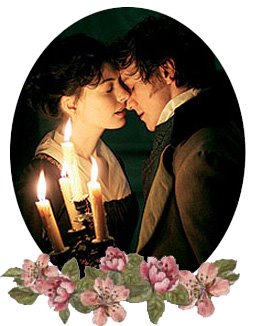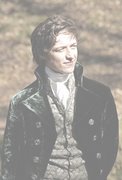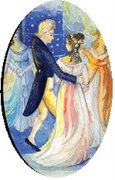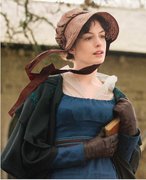Cork Street, London
 I recently had the chance to go up to London to find Cork Street. Seven months after Tom Lefroy left Ashe in Hampshire (home to his aunt and uncle) for London to return to his Law studies, Jane and her two brothers, Edward and Frank, travelled from Steventon via Cork Street to visit the Edward’s home in Rowling, Kent. Ever since reading that Jane stayed here on August 23rd 1796 and speculating along with others as to whether she stayed in the residence of Tom’s uncle, Benjamin Langlois, I have wanted to go there myself.
I recently had the chance to go up to London to find Cork Street. Seven months after Tom Lefroy left Ashe in Hampshire (home to his aunt and uncle) for London to return to his Law studies, Jane and her two brothers, Edward and Frank, travelled from Steventon via Cork Street to visit the Edward’s home in Rowling, Kent. Ever since reading that Jane stayed here on August 23rd 1796 and speculating along with others as to whether she stayed in the residence of Tom’s uncle, Benjamin Langlois, I have wanted to go there myself. During this stay in London, Jane wrote the shortest and vaguest of her existing letters to Cassandra, who was staying with her fiance’s family in Berkshire, and headed it with the simple address of ‘Cork Street’. The biographer Jon Spence decided to delve into this mystery and found that Benjamin Langlois lived in Cork Street at this time- furthermore, there were no inns there due to the short length of the street. In support, it makes sense that if she had been staying in a form of inn/lodgings she would have addressed the letter more specifically. Although there is no proof that Jane stayed here with Tom, it is a very bizarre coincidence that they were in the same short street at the same time. Therefore, in contrast to previous assumptions, it is likely that Jane and Tom may have seen each other again and that this meeting was very crucial to the course of their relationship.
 Although very cryptically, Jane did imply in her letter to Cassandra that there was something of great significance to discuss with her regarding her stay in Cork Street- it makes sense that this issue of great importance was indeed the situation between herself and Tom? She also wrote ‘We are to be at Astley’s to night, which I am glad of’; Astley’s was an equestrian circus. Spence hypothesises that this use of language infers that she is relieved for some reason, perhaps due to this kind of event creating a welcome distraction from the need to formally converse with Tom’s serious uncle or it may present a public diversion so that herself and Tom could be comfortable to chat without observation and judgement.
Although very cryptically, Jane did imply in her letter to Cassandra that there was something of great significance to discuss with her regarding her stay in Cork Street- it makes sense that this issue of great importance was indeed the situation between herself and Tom? She also wrote ‘We are to be at Astley’s to night, which I am glad of’; Astley’s was an equestrian circus. Spence hypothesises that this use of language infers that she is relieved for some reason, perhaps due to this kind of event creating a welcome distraction from the need to formally converse with Tom’s serious uncle or it may present a public diversion so that herself and Tom could be comfortable to chat without observation and judgement.It has been suggested, and incorporated into the film Becoming Jane, that Jane went to Cork Street with the understanding that an engagement to Tom Lefroy would require the blessing and approval of his uncle on whom he financially depended. Tom was the eldest son of 10 siblings (he was the sixth child with five older sisters and four younger brothers) and therefore had great pressure placed upon him to marry well and provide financial security for his entire family. He would most certainly need his uncle to agree to the prospect of marrying Jane, a woman with limited fortune. He would not want to offend his uncle in anyway so this meeting was crucial to the future of their relationship.
 Not too much is known about Benjamin Langlois but as cited from Collins (1988), Egerton Brydges, who met him in the 1780’s found him ‘fatiguingly ceremonious’ but ‘ a good and benevolent old man’. Although this is a complimentary view of the man, it appears that after this meeting the relationship between Tom and Jane was not taken any further.
Not too much is known about Benjamin Langlois but as cited from Collins (1988), Egerton Brydges, who met him in the 1780’s found him ‘fatiguingly ceremonious’ but ‘ a good and benevolent old man’. Although this is a complimentary view of the man, it appears that after this meeting the relationship between Tom and Jane was not taken any further.Did the Judge disapprove of the match and force Tom to stay away from the love of his life? Or did Jane leave Cork Street with the hope and understanding that Tom would visit Steventon in the near future with an offer of marriage?
 At this point Jane embarked on the most creative period of her life. She instantly began the first version of First Impressions (later Pride and Prejudice) and completed it in less than a year. She then returned to her previous work of Elinor and Marianne, and renamed it Sense and Sensibility. Is it possible that this charge in energy expressed through writing was representative of the love that she was experiencing for Tom and the longing that he would return to her and propose marriage?
At this point Jane embarked on the most creative period of her life. She instantly began the first version of First Impressions (later Pride and Prejudice) and completed it in less than a year. She then returned to her previous work of Elinor and Marianne, and renamed it Sense and Sensibility. Is it possible that this charge in energy expressed through writing was representative of the love that she was experiencing for Tom and the longing that he would return to her and propose marriage? All we know is that they were never together again- Tom visited again Ashe in 1798 and did not visit Jane. It is important to note that around this time, Jane began a period of cessation in her writing that lasted almost 10 years until mid-1806.
From this, I believe that it can be concluded that whatever happened during this stay in Cork Street, something of consequence happened to Jane and this is evident from her writing.
The pictures here are some of what I took when I visited the Cork Street of today. I hope that they convey how short the street really is and how unlikely it would have been for any inns to be present at that time. The area surrounding appears very wealthy and this is indicated by the designer stores located at one end of the street. I am unsure where in the street Benjamin Langlois lived so I have taken a few photos of some of what I perceive to be the older buildings. I am very much clueless with regards to the history of architecture so if anyone has any comments about this, they would be most welcome!




Chapman, R. W. (1979) Jane Austen's Letters to Her Sister Cassandra and Others, 2nd edn, Oxford University Press, Oxford.
Spence, J. (2003) Becoming Jane Austen. A Life. Hambledon Continuum.
Collins, I. (1998) Jane Austen: The Parson’s Daughter. The Hambledon Press.














































4 comments:
Thank you, Rachel for the wonderful post. I did not realise that Astley was an equestrian circus; that is very interesting! That meant, following our assumption that Jane indeed stayed with Tom, that they had time to stroll London together. How romantic! And how sad...
sob-sob!
Oh, and I have to amend the common knowledge that they never met again afterwards, for Radovici and Nokes (I guess, or was it Halperin?) thought that they actually met again in Bath in 1797 (the missing letters for the entire year). I hope I can put an article about this sometimes this week.
Keep it up, Rachel, you and Icha are outdoing yourselves with diligent and creative work, bringing these abstract questions to visual life before our eyes-truly walking in the footsteps of Jane Austen. ;)
Wait until you receive Rachel's report of Basingstoke, Arnie! I keep bugging her to spend a weekend in Basingstoke, just to get the feeling of the place! :-D
And Rach, I would also feel that 'spooky' feeling of Jane/Tom if I were there... I envy you for that.
I will indeed await Rachel's next "spy report" with the greatest interest! ;)
Post a Comment